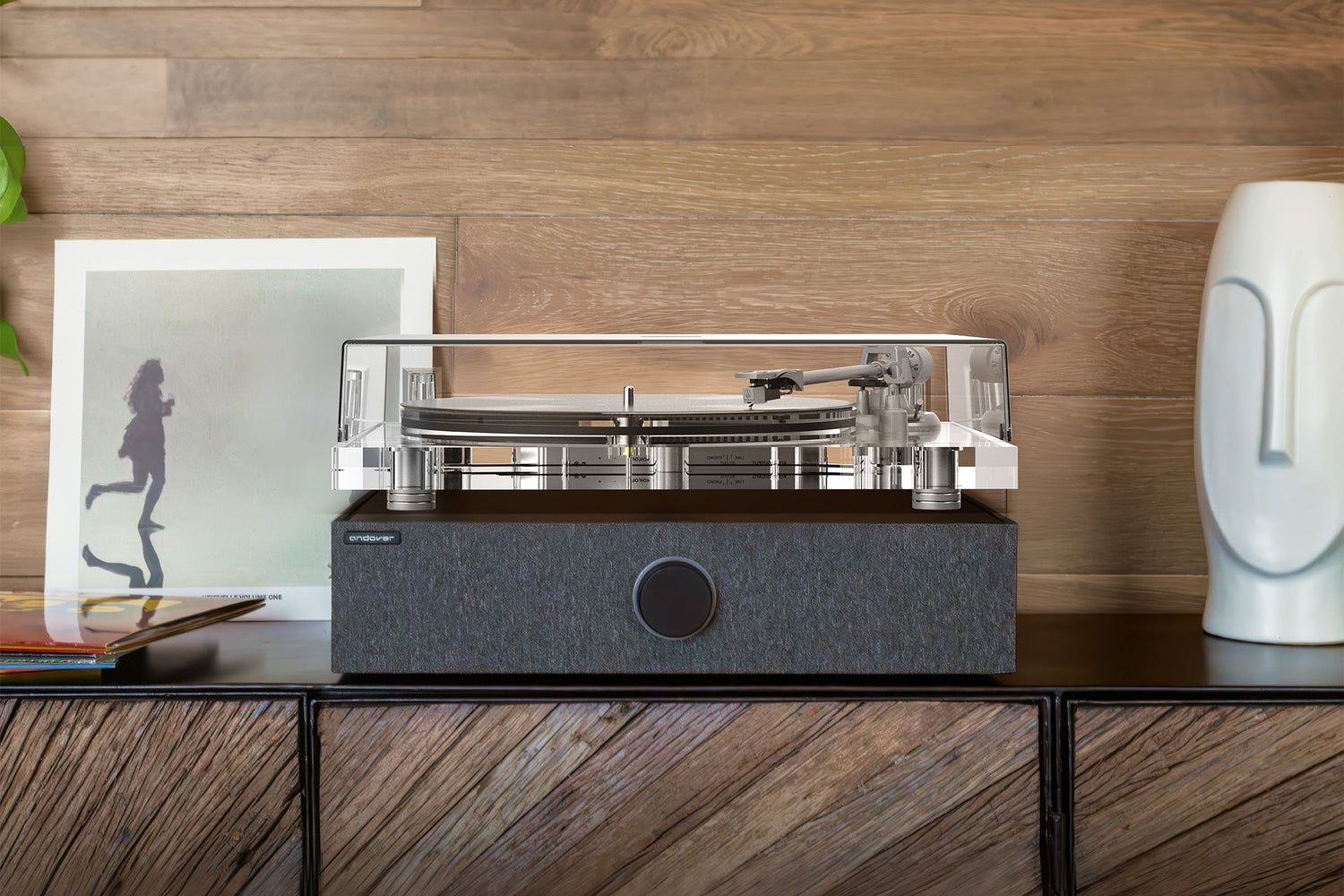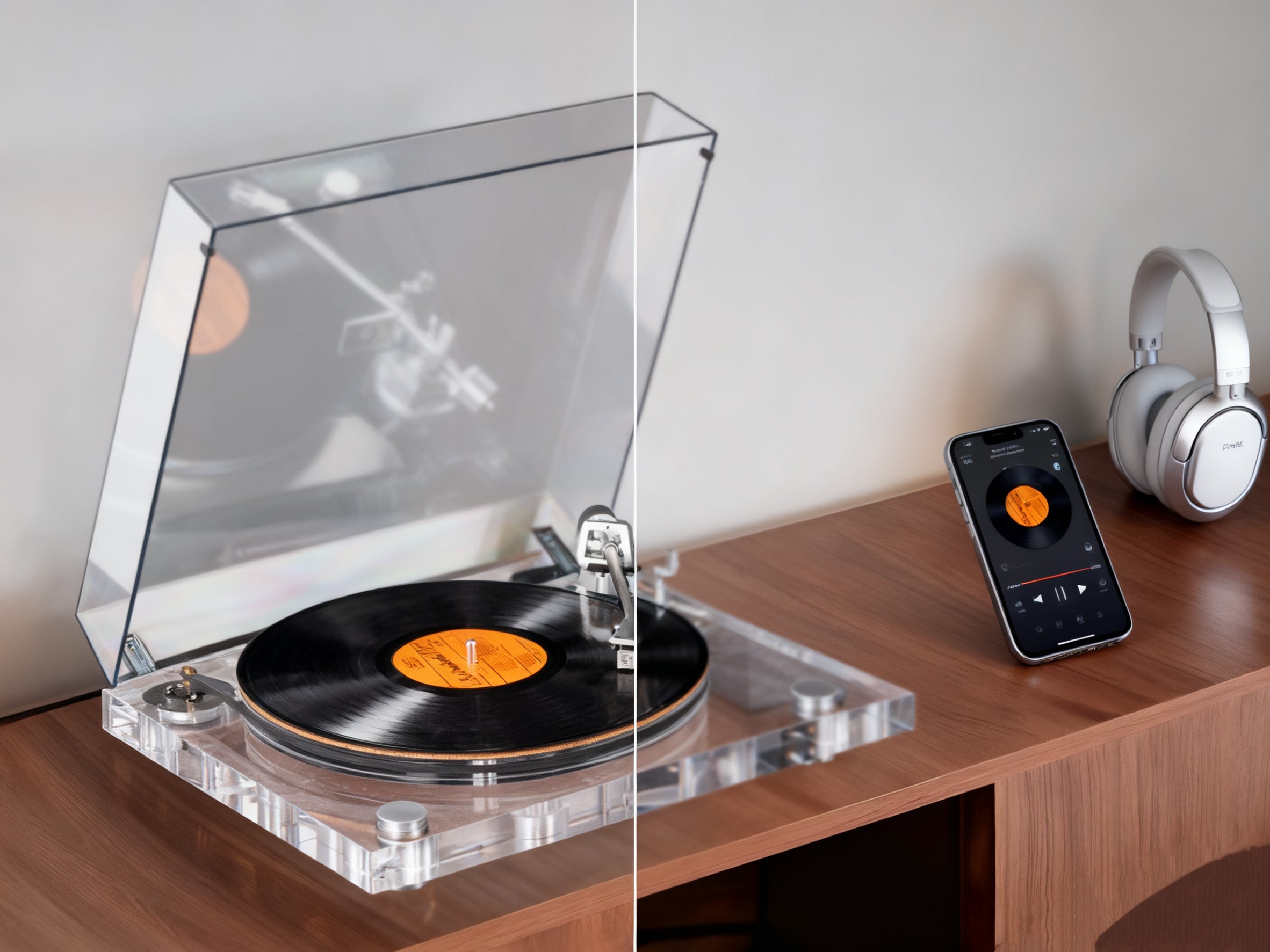Introduction
As audio technology continues to advance, turntables remain a favorite among audiophiles and those seeking quality sound, particularly in terms of sound quality, detail, and emotional expression. However, there are two main types of turntables on the market: high-fidelity turntables and standard turntables. While their operating principles are similar, their performance, sound quality, and price differ significantly.
This article will delve into a performance comparison between high-fidelity and standard turntables, helping consumers better understand their respective advantages and ultimately make an informed purchasing decision. Whether you're a die-hard vinyl audio fan or a first-time buyer, understanding the differences between the two is crucial.
1. Basic Differences Between High-Fidelity and Standard Turntables
High-fidelity (Hi-Fi) turntables have some distinct design and technical differences from standard turntables, primarily in sound quality, build quality, and the materials used.
High-Fidelity Turntables
The core design philosophy of high-fidelity turntables is to maximize the preservation of original sound quality. They typically utilize higher-end components, such as more precise turntables, more powerful drive systems, higher-quality audio components, and specialized shock-mounting. These factors ensure that every nuance of the music is captured.
Regular Turntables
In contrast, conventional turntables may be designed with a greater emphasis on cost-effectiveness, often using more basic components. While they still offer relatively satisfactory sound quality, they cannot match the precision, depth, and clarity of a high-fidelity system.
2. Sound Quality: Advantages of Hi-Fi Turntables
One of the greatest attributes of a high-fidelity turntable is its sound quality, particularly in terms of clarity and depth. They are designed to provide a more realistic and detailed sound experience.
Details in Sound Quality
A high-fidelity turntable accurately captures every nuance of the music, from the powerful bass to the crisp treble, even down to every subtle note. Conventional turntables, on the other hand, may experience distortion or hum in certain frequency ranges, making the sound seem slightly muffled.
Wide Frequency Response
Hi-fi systems typically offer a wider frequency response range, meaning they better render low and high frequencies. This is particularly true in the high end, ensuring clear highs, which can be lacking in standard turntables.
3. Equipment Construction: Design Differences Between Hi-fi and Standard Turntables
Hi-fi turntables typically utilize higher-quality materials and designs to reduce audio interference and enhance sonic accuracy. These designs not only impact sound quality but also the stability and durability of the equipment.
Turntable and Drive System
The turntable of a hi-fi turntable is typically constructed of heavier, more robust materials to reduce vibration and instability during rotation. This helps maintain playback stability and prevents vibration-induced degradation of sound quality. Standard turntables, with their simpler designs, may not offer this.
Tonearm and Stylus
The tonearm and stylus are key components that influence sound quality. Hi-fi turntables typically feature more precise tonearms and high-quality styluses, enabling them to more accurately read the fine details of records. Ordinary turntables may compromise on these components, resulting in sound quality that isn't as rich and accurate as a hi-fi system.
4. Drive System: The Difference Between Hi-Fi Turntables and Ordinary Turntables
The drive system of a turntable significantly impacts its sound quality. Common drive systems include belt drive, direct drive, and chain drive.
Drive System of Hi-Fi Turntables
Many hi-fi turntables use belt drives, which effectively reduce the impact of motor vibration on sound quality, providing smoother, more detailed audio performance. Furthermore, the motors of hi-fi equipment are typically more precise, ensuring flawless playback.
Drive System of Ordinary Turntables
Ordinary turntables may use direct drive or simple belt drive systems. While these systems work well, they may not provide the same precise audio performance as a hi-fi system, particularly lacking bass and detail.
5. Price Comparison: Cost-Effectiveness Analysis of Hi-Fi vs. Standard Turntables
Price is a key factor many consumers consider when choosing a turntable. Hi-Fi turntables are typically more expensive, but the sound quality and performance they offer are worth the price.
The Cost of a Hi-Fi Turntable
The price of a Hi-Fi turntable often ranges from a few thousand to tens of thousands of yuan, depending primarily on the brand, components, and technical level. For those who value sound quality and are willing to invest in a high-quality audio experience, a hi-fi system is undoubtedly worth the investment.
The Cost-Effectiveness of Standard Turntables
In contrast, standard turntables are more affordable and suitable for those on a budget. While the sound quality may not be as rich and precise as that of a hi-fi turntable, standard turntables are perfectly adequate for daily music listening or occasional use.
6. Usage Scenario and Personal Needs: Choosing Based on Your Needs
Ultimately, choosing between a hi-fi turntable and a standard turntable comes down to personal needs and usage scenarios.
The Audiophile's Choice
If you're an audiophile or have extremely high expectations for sound quality, especially if you enjoy listening to delicate musical details or pursue a more realistic sound performance, then a high-fidelity turntable is undoubtedly the best choice.
The Choice for Everyday Use and Those on a Limited Budget
If you only use your turntable occasionally or have a relatively limited budget, a standard turntable can provide an adequate sound quality experience and is more affordable.
Conclusion
The differences between high-fidelity turntables and standard turntables primarily lie in sound quality, build quality, price, and personal needs. While high-fidelity turntables are more expensive, they offer unmatched accuracy, detail, and depth of sound quality, making them ideal for audiophiles who demand the ultimate in sound quality. Standard turntables, on the other hand, are more suitable for everyday listening and those on a budget.
Whichever type of turntable you choose, the most important thing is to base your selection on your needs and budget. I hope this article will help you better understand the differences between the two and help you find the turntable that's best for you.











Leave a comment
All comments are moderated before being published.
This site is protected by hCaptcha and the hCaptcha Privacy Policy and Terms of Service apply.